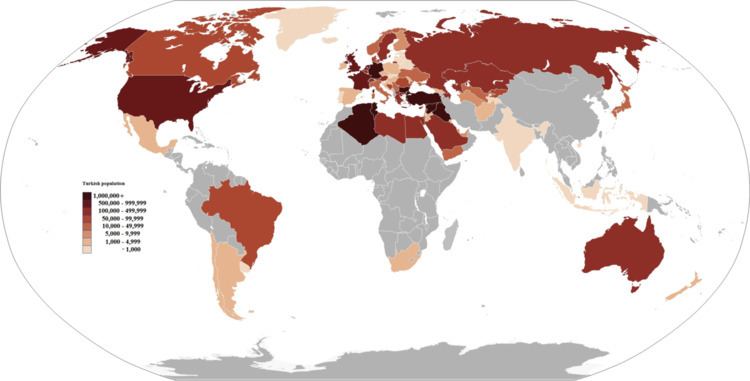 | ||
The Turks in Tunisia, also known as Turco-Tunisians and Tunisian Turks, (Arabic: أتراك تونس French: Turcs de Tunisie Turkish: Tunus Türkleri) are the ethnic Turks who constitute a minority group in Tunisia. In 1534, with about 10,000 Turkish soldiers, the Ottoman Empire took control and settled in the region when Tunisia's inhabitants called for help due to fears that the Spanish would invade the country. Thus, during the Ottoman rule, the Turks colonized and dominated the political life of the region for centuries; as a result, the ethnic mix of Tunisia changed with the migration of Turks from Anatolia and the evolvement of the "Kouloughlis" who are people of mixed Turkish and central Maghrebi blood.
Contents
Demographics
Families of Turkish origin live mainly near the coastal cities, such as Tunis and Mahdia, and the islands (such as Djerba), although there are also many living within central Tunisia as well.
Religion
The Ottoman Turks brought with them the teaching of the Hanafi School of Islam during the Ottoman rule of Tunisia, which still survives among the Turkish descended families today. Traditionally, Turco-Tunisian mosques have octagonal minarets. Examples of Ottoman-Turkish mosques include:
Notable people
The Turks in Tunisia were traditionally a privileged élite in Tunisia who held positions in the military and the bureaucracy. However, by the nineteenth century, marriages with the local population linked the ruling families to indigenous notables. At this time, many Turks also turned to commerce and the crafts, initially in the Souq el-Trouk (the Bazaar of the Turks), where a considerable number of merchants of Turkish ancestry emerged. The Turks also entered the corps of artisans. The Ben Romdhan family, who are of Turkish origin, claim much of the notable Tunisian families of Mahdia such as the Hamza, Turki, Gazdagli, Agha, and Snène families. Other prominent Tunisian families of Turkish origin include the Bayram's, Belkhodja's, El Materi's, Sfar's, Osman's and the Slim's.
